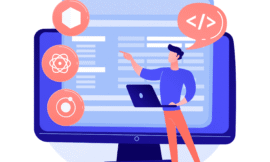A/B testing (or split testing) is one of the most powerful strategies for optimizing your ad campaigns on Google and Facebook Ads. Yet, many marketers overlook key details, leading to wasted ad spend and missed opportunities. If you’ve ever wondered why your ads aren’t performing as expected, it’s time to master the art of A/B testing.
In this comprehensive guide, we’ll explore 7 best practices for A/B testing Google and Facebook Ads to help you fine-tune your strategy, increase conversions, and maximize your return on investment (ROI).
Why A/B Testing Matters for Google and Facebook Ads
A/B testing involves running two (or more) variations of an ad to see which one performs better. By systematically changing one element at a time — such as the headline, image, call-to-action (CTA), or audience targeting — you can identify what resonates most with your audience and refine your strategy accordingly.
Benefits of A/B Testing:
- Improves ad relevance and quality score
- Reduces ad spend by focusing on high-performing variations
- Increases click-through rates (CTR) and conversion rates
- Provides data-driven insights for long-term ad strategy
7 Best Practices for A/B Testing Google and Facebook Ads
1. Test One Variable at a Time
The most common mistake in A/B testing is changing too many variables at once. If you test multiple elements simultaneously, you won’t know which one influenced the result.
👉 What to Test:
- Headlines
- Images or videos
- CTA (e.g., “Sign Up Now” vs. “Learn More”)
- Audience segments
- Ad copy length
Example: If you’re testing the impact of a new image on Facebook, keep the headline and CTA constant. This allows you to isolate the effect of the image on performance.
2. Set a Clear Hypothesis
A strong hypothesis helps you stay focused and measure success accurately. Ask yourself:
- What do I expect to happen if I change this variable?
- How will I measure success (e.g., higher CTR, lower cost-per-click)?
Example Hypothesis:
“If I use a shorter headline with an emotional trigger, I expect a 10% increase in CTR.”
3. Segment Your Audience Correctly
Google and Facebook offer advanced audience targeting, but poor segmentation can skew test results. Split your audience based on specific characteristics like:
- Location
- Demographics
- Interests
- Purchase behavior
Example: Create separate ad sets for mobile and desktop users on Facebook to see which platform performs better.
4. Use Statistical Significance to Determine Winners
Don’t stop a test too early based on initial results. Allow your test to run long enough to collect meaningful data and reach statistical significance (usually 95% confidence level).
👉 Use online calculators like ABTestGuide to determine statistical significance.
Example: If after 1,000 impressions Ad A has a 5% CTR and Ad B has a 7% CTR with 98% confidence, Ad B is likely the better performer.
5. Rotate and Refresh Creative Regularly
Ad fatigue is real, especially with platforms like Facebook where the same users may see your ad multiple times. If engagement drops after a successful test, refresh your creative while keeping high-performing elements intact.
What to Refresh:
- Swap out images and videos
- Adjust the CTA
- Modify color schemes or ad copy tone
Example: If a Facebook ad with a lifestyle image performed well initially but engagement drops after two weeks, switch to a product-focused image.
6. Monitor Performance Beyond CTR
While CTR is important, it’s not the only metric that matters. Track down-funnel metrics like:
- Cost per lead (CPL)
- Conversion rate
- Return on ad spend (ROAS)
- Customer lifetime value (CLV)
Example: An ad with a high CTR but low conversion rate may be attracting the wrong audience — adjust your targeting accordingly.
7. Leverage Automated A/B Testing Tools
Both Google and Facebook offer automated testing tools that use machine learning to identify top-performing ads:
- Google Ads: Responsive Search Ads (RSA) automatically test different headlines and descriptions.
- Facebook: Dynamic Creative Ads allow you to upload multiple versions of ad components (images, headlines, CTAs) and automatically mix and match to find the best combination.
Example: Use Google’s RSA to test different headline combinations without creating separate ad sets.
Common A/B Testing Mistakes to Avoi
Even experienced marketers can fall into these common traps:
❌ Testing too many variables at once – Keep it simple; isolate one element at a time.
❌ Ending tests too early – Let the test run long enough to collect meaningful data.
❌ Ignoring negative results – A failed test still provides valuable insights.
❌ Not testing creative variations – Testing copy alone isn’t enough; test visuals too.
Real-World Example of A/B Testing Success
A digital marketing agency tested two Facebook ad variations for a client in the e-commerce industry:
- Ad A: Focused on product features
- Ad B: Focused on customer testimonials
After 2 weeks and 10,000 impressions, Ad B outperformed Ad A with a 15% higher CTR and a 20% lower CPL. The winning element? Social proof in the form of customer testimonials boosted trust and engagement.
When to Apply Advanced A/B Testing Technique
Once you’ve mastered the basics, consider enrolling in an Advanced Digital Marketing Course to explore more sophisticated testing methods like:
- Multivariate testing (testing multiple elements simultaneously)
- Geo-targeting and dayparting tests
- Machine learning-based ad optimization
Conclusion: Master A/B Testing to Maximize Ad Performance
Effective A/B testing on Google and Facebook Ads is not about luck — it’s about strategy and execution. By following these best practices, you can improve your ad relevance, reduce wasted spend, and achieve higher ROI.
Start small, measure results carefully, and continuously refine your approach. The more you test, the more you’ll learn about what drives results for your audience.
Ready to take your A/B testing skills to the next level? Start implementing these best practices today — your future ad performance depends on it!





